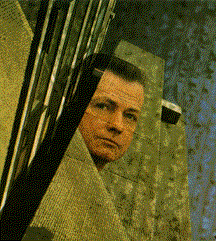An account of Paul Rudolph’s life would make a good opera—a tragedy. Act One. The provincial rube, son of an itinerant Methodist minister in the South, studies architecture in Alabama. He designs his first house at 22, and joins an office in Sarasota, of all places. Goes to Harvard, and studies at Gropius’s knee. The war interrupts. He returns to Sarasota, becomes a partner in the firm, and begins to design remarkable houses—as if Frank Lloyd Wright had attended the Bauhaus. He completes his Harvard degree and returns to Florida and continues to build. The houses are airy, light, delicate, romantic. Act Two. Rudolph acquires a national reputation. He designs an unbuilt embassy in Jordan, a campus building at Wellesley, and an office building in downtown Boston. All striking. He is appointed head of the architecture department at Yale, and builds the Art and Architecture Building—massive, concrete, brooding. Not Form Follows Function, but Form Follows Imagination. He leaves Yale to set up an office in New York. Act Three. It is the Age of Theories—postmodernism, populism, regionalism—but Rudolph is no theoretician; he is an artist. His romantic monumentalism appears outdated and he is left behind. The Yale building, increasingly unpopular with students, burns—perhaps arson— and in some undefinable way the architect is blamed. His commissions dry up. Rudolph continues to build in Singapore and Hong Kong, but he cannot recapture the old magic. He is forgotten. The curtain descends.
Until such an opera comes along, we have Timothy M. Rohan’s forthcoming The Architecture of Paul Rudolph (Yale University Press). The book shows Rudolph to have been an intensively private man, an introspective romantic, and while Rohan covers the work (although the photographs appear awfully flat to me), his subject never quite comes alive. Rudolph’s buildings, on the other hand sing out, forte fortissimo.


